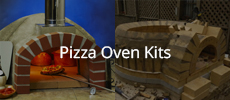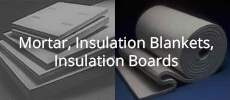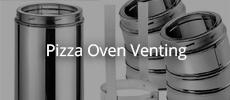Originally posted by david s
View Post
Announcement
Collapse
No announcement yet.
Another curing question
Collapse
X
-
There’s your answer. However, if you laid the floorbricks over the vermicrete without allowing it a couple of weeks to dry first, then you have trapped the moisture in and it will take longer to drive it out with fire. See attached vermicrete slab drying experiment.Attached FilesLast edited by david s; 07-25-2022, 05:05 AM.
-
Well I did a dry run of firebricks directly on the vermiculite slab and now that I see it all laid out , is there a need for anything at all underneath? They are all level.Originally posted by david s View Post
As advised by Utah "Typically floors are not mortared or set in mortar. This allows the floor bricks to expand and contract. If leveling in required a mix of 50% sand and 50% fire clay is used as a leveling medium. It is spread out with a notched trowel and brick set in and leveled with a rubber mallet."
Apart from allowing free expansion of individual bricks with varying temperatures and therefore varying thermal expansion, mortaring the floor bricks down with portland cement would be using a material that will not withstand the temperature under the floor. If you must mortar the floor bricks down refractory cement would be a better option. Some might say that a vermicrete slab is subjected to the same temperatures on its surface and while this is true, because of all the air in the mix only the very top layer (i'd suspect 5mm or so to be effected. Nobody has reported problems with vermicrete slabs deteriorating, but plenty have reported problems with mortared floor bricks. Another consideration is that a mortared floor brick is far harder to replace than an unmortared one.
-
As advised by Utah "Typically floors are not mortared or set in mortar. This allows the floor bricks to expand and contract. If leveling in required a mix of 50% sand and 50% fire clay is used as a leveling medium. It is spread out with a notched trowel and brick set in and leveled with a rubber mallet."Originally posted by Pizzarotic View PostHi Jim, if you want to lay you floor bricks wet then Portland cement will do just fine. You could even grab a small bag of brickies mortar as you won't need much. Screed a half inch bed or less of morter with a screed then carefully place your floor bricks. Take you time with a straight edge and rubber mallet to level the floor. Wait a couple of hours for the mortar to set up then go around with a trowel and remove the excess morter from the outside edges.
Apart from allowing free expansion of individual bricks with varying temperatures and therefore varying thermal expansion, mortaring the floor bricks down with portland cement would be using a material that will not withstand the temperature under the floor. If you must mortar the floor bricks down refractory cement would be a better option. Some might say that a vermicrete slab is subjected to the same temperatures on its surface and while this is true, because of all the air in the mix only the very top layer (i'd suspect 5mm or so to be effected. Nobody has reported problems with vermicrete slabs deteriorating, but plenty have reported problems with mortared floor bricks. Another consideration is that a mortared floor brick is far harder to replace than an unmortared one.
-
Thats a worry, it's always best to have some rebar. I assume the spans are not too wide?Originally posted by pmgnut View Post4" concrete slab spanning walls {no rebar},
-
Hi Jim, if you want to lay you floor bricks wet then Portland cement will do just fine. You could even grab a small bag of brickies mortar as you won't need much. Screed a half inch bed or less of morter with a screed then carefully place your floor bricks. Take you time with a straight edge and rubber mallet to level the floor. Wait a couple of hours for the mortar to set up then go around with a trowel and remove the excess morter from the outside edges.Originally posted by pmgnut View PostCan we use regular mortar underneath the firebrick floor?
-
Typically floors are not mortared or set in mortar. This allows the floor bricks to expand and contract. If leveling in required a mix of 50% sand and 50% fire clay is used as a leveling medium. It is spread out with a notched trowel and brick set in and leveled with a rubber mallet.
A couple items that need clarification.
What is supporting the pcrete slab, ie a concrete hearth with rebar.
What is the ration of p/v to concrete, typically a 5 to 1 is supportive enough as long as there is a concrete hearth underneath. Anything richer does not have very good insulative qualities. Even 5 to 1 cannot compare to CaSi board.
Home brew is used quite often with our blog members, 3/1/1/1 (Sand, Lime, Portland, Fireclay (hardest to find but inexpensive) as mortar for ovens.
I suggest you download the free eplans from Forno Bravo and review them, they are a good baseline but dated.
-
Hi all, Jim from CT here. My son and I started an outdoor pizza oven a couple months back. We have the walls up, the platform on top of the walls, and last weekend we poured 5 1/2" portland/vermiculite mix for underneath the firebrick oven floor. This weekend the plan was to begin laying the firebrick floor on top of the vermiculite & portland slab. I realize when we get to the firebrick arch we will definitely need to use refractory/high heat mortar, but do we really need to use high heat mortar to lay the firebrick floor in place? I'm shocked at how the price of refractory mortar is going up by the day. Currently $74.00 for a 50lb bag! Can we use regular mortar underneath the firebrick floor? I mean, if a bed joint cracks, the firebrick can't really go anywhere, as the entire floor will eventually be surrounded by a dome/arch and backwall.
- Likes 1
-
Another curing question
Hi all, I've been reading tons of information on curing a masonry oven once completed. Seems to be an overwhelming amount of information out there which is making me more confused. So upon completing the build, what's the next step? I'm guessing waiting one week even before burning a few newspapers is most definitely required. So after that, starting the first "real" fire, is the idea to get each and every firebrick to a low temp {say for sake of argument 100 degrees farenheit}. OR is the idea to get the overall oven heat from the fire to 100 degrees, and for how long?
my other question is rain. Suppose your oven is fully cured of moisture, you've gone through the step by step process now your done curing. then it rains on your oven. Do you have to go through the curing steps all over again?Tags: None





Leave a comment: